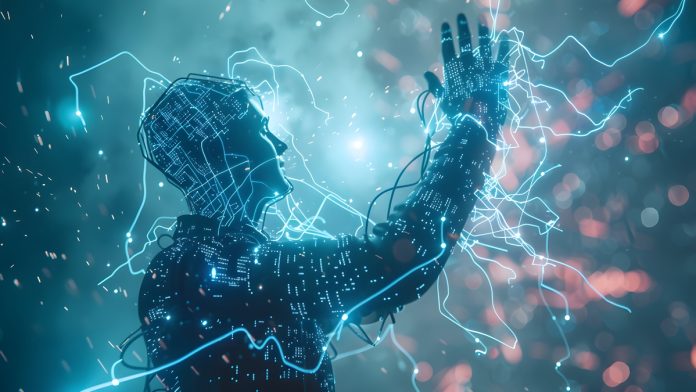The entertainment industry is undergoing a revolutionary transformation as digital technology reshapes traditional casting and performance. Over the past decade, a convergence of advanced computing, motion capture, and artificial intelligence has paved the way for a new era, one where digital personas challenge conventional norms. In this brave new frontier, projects featuring Virtual Actors and Digital Humans have sparked both excitement and debate among filmmakers, technologists, and audiences alike, heralding a casting revolution that redefines storytelling in cinema and beyond.
| Table of Contents | |
|---|---|
| I. | Technological Evolution of Digital Humans |
| II. | Redefining Traditional Casting Practices |
| III. | Ethical and Societal Implications |
| IV. | Advances in Motion Capture and Animation Technology |
| V. | Audience Engagement and Emotional Connection |
| VI. | Legal, Copyright, and Intellectual Property Challenges |
| VII. | Economic Impact on the Entertainment Industry |
| VIII. | Integration into Interactive Storytelling and Immersive Media |
| IX. | Future Trends and Theoretical Models in Digital Performance |
Technological Evolution of Digital Humans
Rapid progress in computer graphics and AI has redefined what is possible in digital performance. Early attempts at digital humans were rudimentary, but innovations in rendering and simulation have now produced characters with startling realism. This evolution has been fueled by state-of-the-art hardware and sophisticated software that blend motion capture, neural networks, and real-time graphics. Today, industry pioneers are crafting immersive digital personas that mirror human emotion and nuance. In many groundbreaking projects, Virtual Actors and Digital Humans emerge as pivotal elements in crafting lifelike narratives.
Redefining Traditional Casting Practices
As digital techniques mature, casting directors and creative teams are increasingly open to integrating computer-generated performers alongside live actors. This paradigm shift challenges long-held industry standards by expanding the possibilities for character portrayal and narrative flexibility. Digital casting offers unprecedented control over performance, enabling directors to modify and refine scenes with precision that traditional methods cannot match. With this innovative approach, audiences witness roles that transcend the limitations of human capability. Notably, the rise of Virtual Actors and Digital Humans is redefining the very notion of casting in contemporary media.
Ethical and Societal Implications
The use of digital performers raises critical ethical questions and societal debates. Concerns about authenticity, representation, and the potential displacement of human talent have become central to discussions in creative and regulatory circles. Some argue that the seamless integration of digital characters might blur the line between reality and fiction, leading to new challenges in maintaining artistic integrity. Moreover, as these digital personas become more lifelike, industry stakeholders must address issues of consent, data privacy, and digital rights. Amid these debates, Virtual Actors and Digital Humans stand as symbols of both progress and the ethical dilemmas accompanying technological advancement.
Advances in Motion Capture and Animation Technology
Behind the curtain of digital performance lies the intricate work of motion capture and animation technology. Today’s systems record human movement with remarkable precision, capturing every nuance of facial expression and body language. These detailed data streams are then translated into digital avatars, bringing characters to life with emotional depth and kinetic energy. Filmmakers and game developers are leveraging these advances to create performances that resonate on a deeply human level, even if the actor behind the scene is virtual. As a result, Virtual Actors and Digital Humans are now crafted with a level of realism that was once unimaginable.
Audience Engagement and Emotional Connection
While technology drives the creation of digital personas, the ultimate measure of success lies in audience engagement. Viewers are increasingly open to experiencing stories told through a blend of live action and digital performance. When done well, these performances evoke genuine emotional responses, fostering a deep connection with characters who may not be physically present. The merging of artistic vision with technical mastery creates immersive narratives that captivate and inspire. In many modern productions, the lifelike qualities of Virtual Actors and Digital Humans contribute significantly to forging an emotional bond between the story and its audience.
Legal, Copyright, and Intellectual Property Challenges
As the digital realm expands, so too do the legal challenges that accompany it. The creation and use of digital personas present a complex maze of intellectual property issues, from copyright claims on digital likenesses to ownership rights over virtual performances. Studios and legal experts are now tasked with drafting new frameworks that address these concerns, ensuring that artists, technologists, and investors receive fair recognition and compensation. These discussions are vital in maintaining a balance between innovation and the protection of creative rights. Consequently, the emergence of Virtual Actors and Digital Humans demands a rethinking of legal precedents in an evolving digital landscape.
Economic Impact on the Entertainment Industry
The integration of digital performers is reshaping economic models across the entertainment sector. Production costs can be significantly reduced by employing digital actors for dangerous stunts or complex scenes, while also opening new revenue streams through merchandising and licensing digital likenesses. As studios invest in cutting-edge technology, the shift toward digital performance is also creating new jobs in tech, animation, and software development. This economic transformation is prompting industry analysts to forecast a rebalancing of traditional production budgets, with Virtual Actors and Digital Humans serving as catalysts for both cost-efficiency and creative expansion.
Integration into Interactive Storytelling and Immersive Media
Digital performance is not confined to the silver screen alone; its influence is rapidly permeating interactive storytelling and immersive media such as virtual reality and video games. By blending narrative with technology, creators are developing experiences that allow audiences to interact with characters in real time, blurring the lines between observer and participant. These immersive platforms offer novel ways to engage with stories, making the viewer an active part of the narrative journey. In these dynamic environments, Virtual Actors and Digital Humans enrich interactive worlds, providing a seamless bridge between traditional performance and digital interactivity.
Future Trends and Theoretical Models in Digital Performance
Looking ahead, the trajectory of digital performance points toward even greater integration of artificial intelligence and machine learning. Researchers and industry experts are exploring theoretical models that could predict audience reactions, optimize performance nuances, and even create entirely autonomous digital performers. These trends hint at a future where digital and human actors might collaborate seamlessly, pushing the boundaries of narrative form and creative expression. As experimental projects continue to evolve, the prominence of Virtual Actors and Digital Humans is set to expand, inviting both admiration and critical scrutiny from a diverse global audience.

